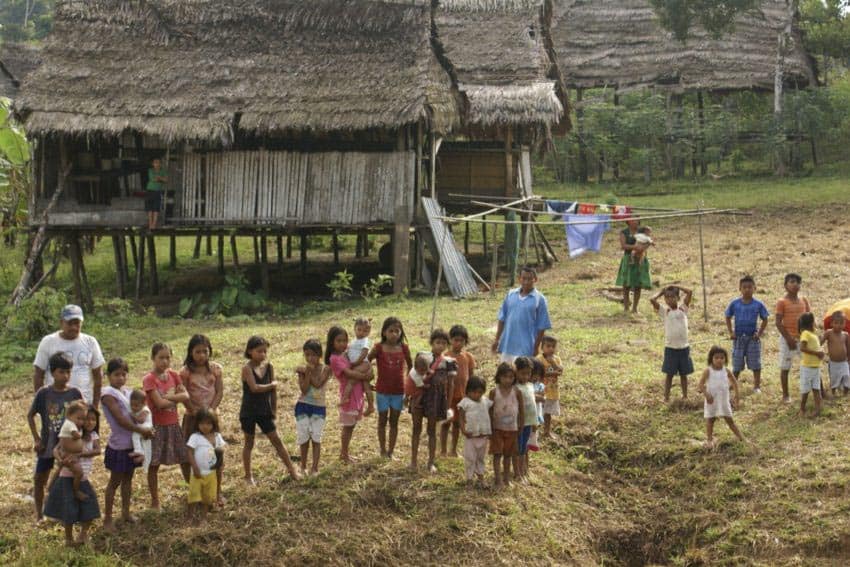
Rollin’ on a River: Tramping up the Amazon River on Cargo-Passenger Ships
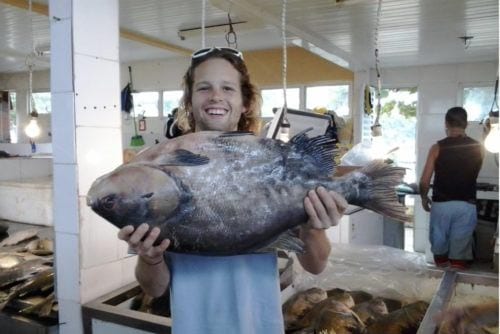
By Johnny Motley
If your preferred style of travel is defined by luxury, comfort, strict itineraries, and perfect safety, this article is probably not for you.
Itching to test your limits as a backpacker and see some of the most isolated regions of the planet? Want an intense and authentic taste of the fascinating cultures and majestic nature of the Amazon rainforest?
Better yet, how about spending only a tiny fraction of the price that an Amazonian tour agency would charge?
For my money, the best way to see the “Lungs of the Earth” is to grab a hammock, pack ample bottled water and bug spray, and hop one of the thousands of cargo-passenger ships that ply the vast spider web of rivers and tributaries that comprise the Amazon Basin.
A Mental and Physical Challenge
Traveling by cargo-passenger ship is physically and mentally challenging. Like most rhythms in the Amazon, the pace of this style of travel is slow, painfully so for an urbanite used to velocity and timeliness. Boat schedules usually do not run on time, and weather and mechanical issues can easily add days to your journey.

If making connections, expect to wait in small villages for days for your boat to arrive, unload its wares, and depart. There is little in the way of stimulation on the boats, and without TV, internet, or the comforts of a city, a 7-8 day trip on a cargo-passenger boat will prove to be a dopamine fast.
Think you’ve got a strong stomach? Well, we’ll see about that.
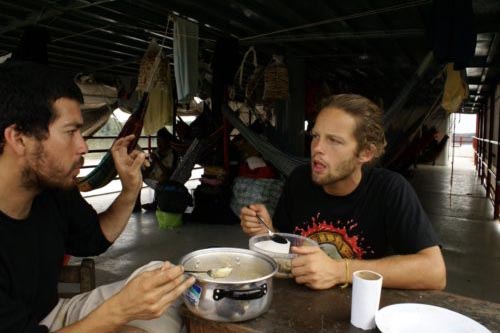
Nonetheless, the intimate view of the jungle and the adventure to be had are unrivaled. Have you been wondering if you can survive a week without electronics and social media?
It can be done more easily when the only entertainment at your disposal is reading, talking with fellow passengers, and staring into the endless forest.
No Sterilized Ship
There is nothing whitewashed or sterilized about cargo-passenger ship travel; it is the form of transport that thousands of local residents use each day. You will visit villages, meet characters, and see sections of the jungle that simply would not be possible with a tour group.
Sleeping in a hammock in the oh-so-rich rainforest air, waking up to sunrises over the river, and passing days utterly disconnected and unplugged purifies and rejuvenates the spirit as much as any new-age meditation retreat.
You’re deep in the jungle, hundreds of miles from civilization
What are Cargo-passenger ships?
While still primarily deep, dense jungle (although, one day, sadly, this may not be the case), the Amazon Basin contains countless villages, military bases, and even major cities strewn along its waterways. For example, Manaus, a city founded where the Rio Negro and the Rio Solimões converge to form the Amazon River, is one of the largest cities in Brazil.
Iquitos, a buzzing city surrounded by nearly impenetrable jungle, is a major city in Peru, although only accessible by boat or plane. As there is no complete road system through the rainforest, human habitation is connected by ships, the most popular transportation means for both goods and people.

For the Amazonian backpacker, “cargo-passenger ships” are akin to the Greyhound buses of the jungle: they’ll carry you vast distances –with some journeys lasting over a week and covering hundreds of miles — all on the cheap.
Anchored at nearly every port in the world’s largest river system, cargo-passenger ships—garish, colorful, and usually far too old and rickety for comfort—resemble the river queens of Mark Twain’s Mississippi.
Why Travel on Cargo-Passenger ships
Exploring the Amazon, a lifelong dream for many can be prohibitively expensive if done through a tour group—we are talking thousands and thousands of dollars for a few days of guided, spoon-fed jungle excursion.
Now, the point of this article is not to hate on tour groups, but for the twenty-something dirt-poor backpacker, this option is simply not in the cards.
Depending on your luck, the time of year, and your haggling prowess, a weeklong journey on a cargo-passenger ship will cost in the ballpark of $100-150 USD (400-600 Brazilian reais). This price includes three meals a day—usually good, hearty fare at that—for the duration of the boat ride, and since shopping sprees are unlikely in the small villages where you might spend a few hours, this price is more or less the total price for a week in the Amazon.
If the boat has a bar, as some do, you’ll probably drop some cash on beer or snacks. Trust me, if you calculate the price per diem, it is much, much less than the average amount a backpacker will spend on hosteling, food, beer, and entertainment in Rio de Janeiro or Florianópolis.
More importantly than saving serious cash, cargo-passengers ship promise to satisfy the yen for rugged adventure, offering a raw no-frills glimpse of the people and places of the true Amazon. Passengers pass the long hours telling stories, playing dominos, strumming guitars, and drinking.
Ship-Board Conversations
Through conversation, I learned more about the history, customs, and cuisine of Amazonia than I ever would have. I met Indigenous residents from a myriad of tribes, usually traveling from a major city like Manaus to their respective reservations and speaking Portuguese or Spanish only as a second or third language. I listened to stirring narratives from soldiers weathered mestizo fishermen and even drug-runners.
The ships anchor for hours, sometimes even the better part of a day, in small villages during which time passengers are permitted to disembark and take a walkabout. On my travels through the Amazon, the Rio Negro, Rio Solimões, and countless small rivers and tributaries in Colombia, Ecuador, Peru, and Brazil, each town I explored had its quirks, points of interest, and even keen beauty.

Brazilian Cachaça for Sale
One town in Brazil had a tiny wooden magazine (store) that sold cachaça, the notorious Brazilian rum, infused not with jungle fruits but also jungle creatures (the purveyor swore that one shot of his serpent-steeped liquor was more potent than Viagra). A tiny village in Peru sold hand-rolled cigarettes made with a form of tobacco, known as mapucha, that literally contains 15-20 times the amount of nicotine as its industrialized counterpart.
In Brazil, every town we anchored, no matter how miniscule or isolated, boasted a handsome cathedral and plaza.
Finally, journeying on cargo-passenger ships allows for full immersion in the majestic nature of the rainforest. One of the longest routes I undertook was from Manaus to the tri-border of Brazil, Colombia, and Peru (a bizarre corner of the jungle where one city straddles all three of these nations), a trip which lasted slightly over a week.
Civilization Lightyears Away
Three or four days after departing Manaus, civilization felt lightyears away, and we plied the waters for several more days through countless miles of the towering, virgin jungle—an awe-inspiring and nigh spiritual experience for me.
At times, the river was so wide it seemed an ocean, with islands and mysterious pink river-dolphins occasionally coming into view.
When the river narrowed into a tributary, the canopy of the sky-scraping trees was so thick that it was as if we were sailing through permanent dusk. Monkeys, parrots, caimans, and dolphins were the only inhabitants in sight. Catching a glimpse of a jaguar, the king of the Amazon, near the riverbank is not common but is possible.
And, oh, how the stars at night are big and bright! To this day, in all of my travels, I have never beheld a night sky as starry and clear as those in the deep depths of the jungle.
Where to start your journey on a cargo-passenger ship
Due to the size of their ports and their locations, I recommend commencing a boat-journey either in Manaus, the capital of the Brazilian state of Amazonas, or Belém, the capital of the coastal Amazonian state of Pará. Belém is the gateway to the Amazon and the city has a colonial charm and is a melting pot of Afro-Brazilian and Indigenous cultures.
From Belém, it about a week upstream to Manaus ($150-200/ticket); however, most travelers will want to visit Santarem, almost on the midpoint between Belém and Manaus and famous for its sandy river-beaches crystalline water (you might think for a second that you’re in the Caribbean).
Altar do Chão usually ranks high in the list of the best beaches in Brazil — no small feat considering that the country has so much stunningly beautiful coast. From Manaus, it is about 7-8 days to Tabatinga ($150-200/ticket), the city lying on the tri-border region. Again, bear in mind that since ships depart 1-2 per week, travelers will often have to wait several days for their ship to leave after purchasing a ticket.

If you begin your Amazonian journey on the jungle’s other extreme, Peru or Colombia, the cities of Iquitos and Leticia are well-worth seeing and offer connections eastwards to Manaus and Belém.
It should be mentioned that the quality of the boats and general levels of sanitation and comfort are much better in Brazil than in Colombia and Peru.
What never ceased to amaze me about the Amazon was that with enough time and a bit of moxie, you can take a boat—or, more accurately, a series of boats typically—to literally any corner of the rainforest, a region about the size of the continental US and touching nine countries.
In the Port of Manaus, where hundreds of cargo-passenger ships are docked, a mariner explained to me that boats departing this port would go to destinations as far-flung as Suriname, Bolivia, and Colombia.
Again, most of the time, you have to take a series of connections to get to your destination, often waiting in villages or military bases for days for the next ship to arrive, unload its wares, and depart.
Some might say it’s boring; I would say it’s meditative.
A beach in Altar do Chão, halfway in between Belém and Manaus
In Manaus, tickets for cargo-passenger ships can be purchased directly at the Port of Manaus in front of the iconic Mercado Aldopho Lisboa (on a side note: you should set aside at least 2-3 hours to roam around the grand market and its surrounding areas—the fruits, herbs, fish are dazzling).
In Belém, boats dock about 20 km north of the city in the district of Icoaraçi At the port, the boats will have signs indicating their final destinations (e.g. Tabatinga, São Gabriel, Bolivia). Tickets can rarely be purchased the day of the journey, and usually can be purchased several days in advance.
For longer or less popular routes, such as going from Manaus to the aforementioned Tri-Border or from Belém to the Guyana’s, boats depart usually only once or twice per week. If your timing is bad, you might find yourself waiting 4-5 days for your boat to depart (although there is plenty to do and see in both Manaus in Belém).
Ask a Local to Buy Your Ship Ticket
When purchasing your tickets, you will without question save money if you go with a local and have he or she do the negotiating. Gringos, i.e. any non-Brazilian, will get charged roughly 2-3 times the amount that a local would pay for their fare.
Occasionally, ships are large enough that you can purchase a cabin with a simple bed and some privacy (usually costing 3-5 times the price of hammock-accommodation), but the vast majority of travelers simply sling up a hammock and take in the stars and fresh air. When it rains, as it often does during certain months, the newer boats unfurl a tarp around the exterior of the decks to keep passengers dry.
What to bring on a Carg0-Passenger Ship Voyage
First and foremost, make sure to purchase a comfortable and reliable hammock and at least two lengths of sturdy rope to tie it up ($10 USD). This, of course, if you are not sleeping in a cabin. A single backpack has more than enough space for the clothes and supplies that you will need for even a weeklong boat journey.
Make sure to bring some warmer clothes, like sweatpants and a hoodie, and even a blanket; even though the days are blazing hot, it gets shockingly cold on the river at night.
Earplugs and an Eye Mask
Earplugs and an eye mask will certainly be a necessity if you’re a light sleeper—it’s like a summer camp all over again with the unavoidable snorers in close vicinity keeping everyone awake. A smaller bag, one you can hook or latch to the overhead hammock poles, for food, a book, and other objects that need to be in immediate reach is recommended.
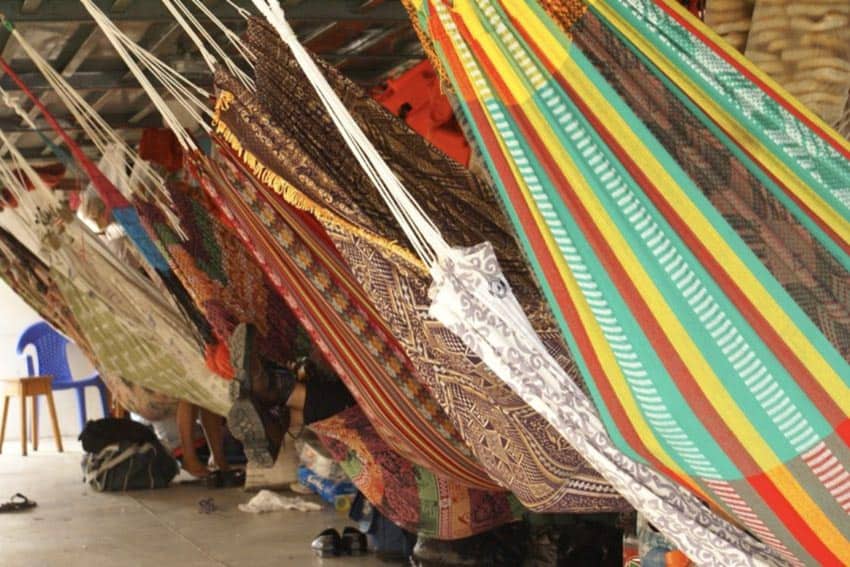
The floors get filthy, and you’re well-advised to keep your backpack propped up, or even latched to one of the overhead poles as well. Watch your stuff like a hawk, especially when the boat lays anchor and villagers come on board to sell food, coconuts, etc. Another traveler I knew was robbed of all his money after somebody rummaged through his backpack when he was away, and such theft is all too common.
It’s slightly less comfortable, but I would sleep with my wallet, cell phone, passport and other valuables in my pockets.
Although three meals per day are included in the ticket price and larger boats will have a magazine selling snacks, smokes, hot coffee, bottled water, and booze, you will, of course, save money if you buy your own snacks, water, and alcohol on land. Bolo podrido (tr: rotten cakes) are tapioca-starch cakes laced with dried fruits, and they are nutritious and delicious.
They, or something similar, can be purchased by hawkers who come on board at village stops. Likewise for bags of cashews, dried fruits, and beer. There is a bewildering smorgasbord of fruits, coconuts, and fish that you will encounter as well.
Bring Toilet Paper and Insect Repellent on the Cargo-Passenger Ship!
Important: bring your own toilet paper, otherwise it will be, well, a shitty few days. In the words of my favorite South Park character, make sure to bring a towel.
Insect Repellent is a must, and both natural repellents and industrialized products can be easily found. If you must take your laptop, realize that it will be the most expensive gadget that many of your fellow-passengers have ever seen and may prove to be an overwhelming temptation to steal. Keep it out of sight as much as possible. Ditto with fancy cameras and cell phones. Stomach remedies, such as Pepto-Bismol or something similar, are not a bad idea either.
Lastly and crucially, if you are crossing borders in the Amazon, you have documentation that you have received a yellow fever vaccination. This documentation will have to be presented along with your passport when crossing international borders, and you will get barred from entering new countries if you don’t have it.
You can get vaccinated before departing for the Amazon, but you can also receive the vaccine safely and affordably in Brazilian health clinics, known as postos de saúde.
Finally, knowing Spanish or Portuguese will help tremendously with navigating through the Amazon, as English proficiency is not common outside of the major cities in this region. If you don’t speak English or Portuguese, it’s not a deal-breaker, but it will be a more complicated trip.
Boa viagem, meu amigo.
 Johnny Motley is a religious studies teacher, incorrigible wanderer, and aspiring writer and photographer. After graduating from Harvard College, he decided that being a responsible adult was not for him and has been scheming about how to continuously keep exploring the world ever since. Read more of his articles on johnnymotley.com and follow him on Instagram @motjohnny.
Johnny Motley is a religious studies teacher, incorrigible wanderer, and aspiring writer and photographer. After graduating from Harvard College, he decided that being a responsible adult was not for him and has been scheming about how to continuously keep exploring the world ever since. Read more of his articles on johnnymotley.com and follow him on Instagram @motjohnny.
- Missouri Sports Travel Adventure: From Landmarks to Ballparks - January 21, 2026
- What First-Time Visitors Get Wrong About Visiting Iceland - January 15, 2026
- Bareboat Charter vs all-inclusive Crewed: Which Luxury Charter Fits You? - December 29, 2025


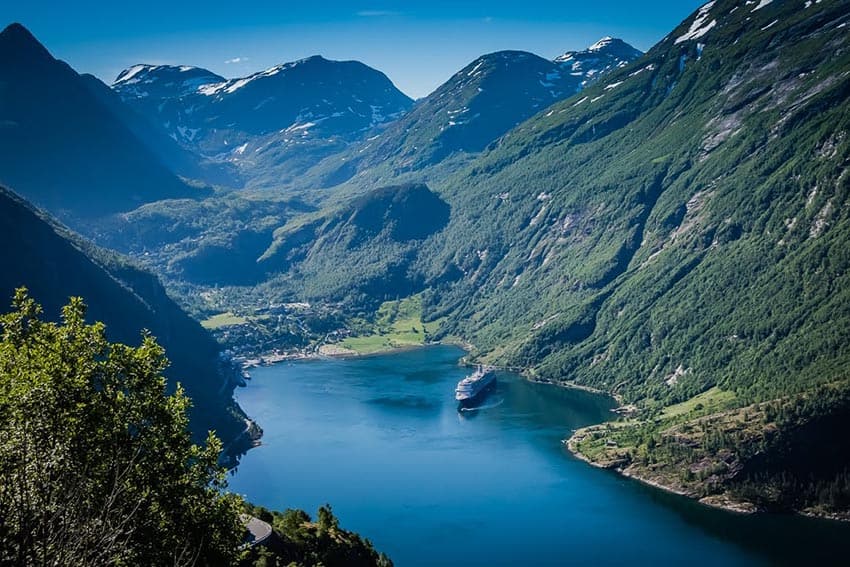
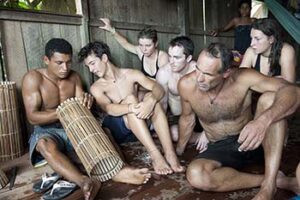
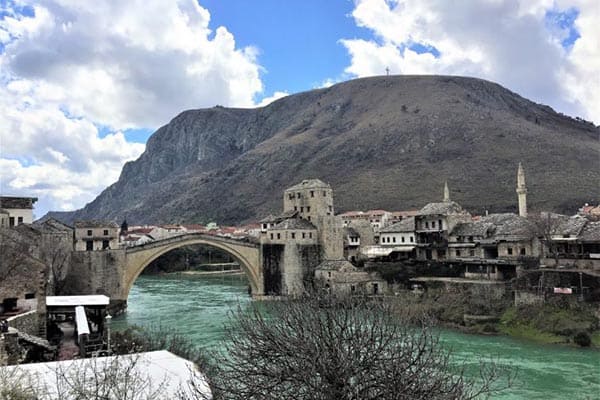



What a great article. I really enjoyed it esp. since back in 1996 when I was 53, I went to Ecuador myself and stayed on an island in the Amazon. One day, I took a walk into the jungle with my netted-against-bugs jungle hat on. Came upon a group of “native” men who were practicing with blow guns. By sign language, I had them teach me how to do it…quite a trick. I was then invited to have lunch in their hut up on stilts. It had no windows, no electric, and I had no idea what I was eating, but it was good. After lunch, I asked, again in sign language, the teenaged boy if he would help me build a raft to go down the Amazon. (Back in the 1930s my father had taken a canoe down the Amazon and I wanted to “best” his adventure.) We walked thru the jungle and down to the river where we “cut” down I think they were small balsa trees and wove them together with vines into a raft then launched it into the Amazon. I hadn’t realized how fast the river goes and we were scooting along at a great rate in the direction downstream of the island I was staying on. I decided to do my father’s adventure one better and indicated to the boy that I was jumping off. He looked aghast, but into those cold waters I went. Wow, my body was going so fast down the river I didn’t even have to use my legs or arms. After about 40 minutes, I saw the island ahead and wondered how I would be able to steer myself over to it and not miss it. I put my arm down like a rudder and managed to get over to the little tributary that lead around the small island. To my horror, I was going so fast I couldn’t stop and the tiny tributary got shallower and shallower as I headed inland.
After a very short time, my body was scraping bottom and when I stood up, I was bleeding from neck to toes with all the gravel cuts. Oh, well….it was all worth it.
love this!!
I always love reading about Johnny’s adventures! Thank you for sharing, hope to read more amazing stories.
Eli I’m so glad you enjoyed this story. We love being able to get our readers excited about their future travels!
What a journey! I could taste the adventure. This was the perfect read for quarantine…can’t wait to get back on the road.